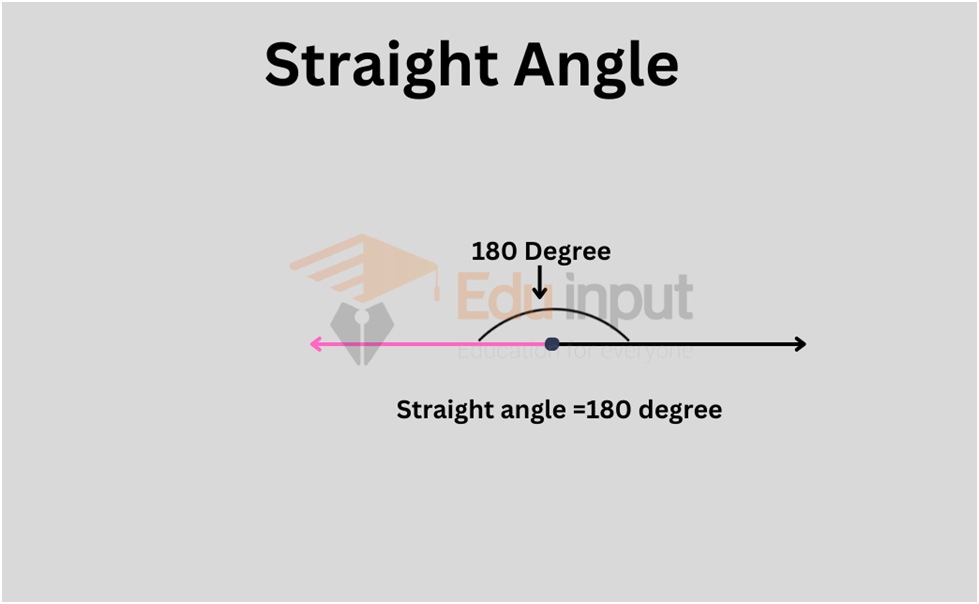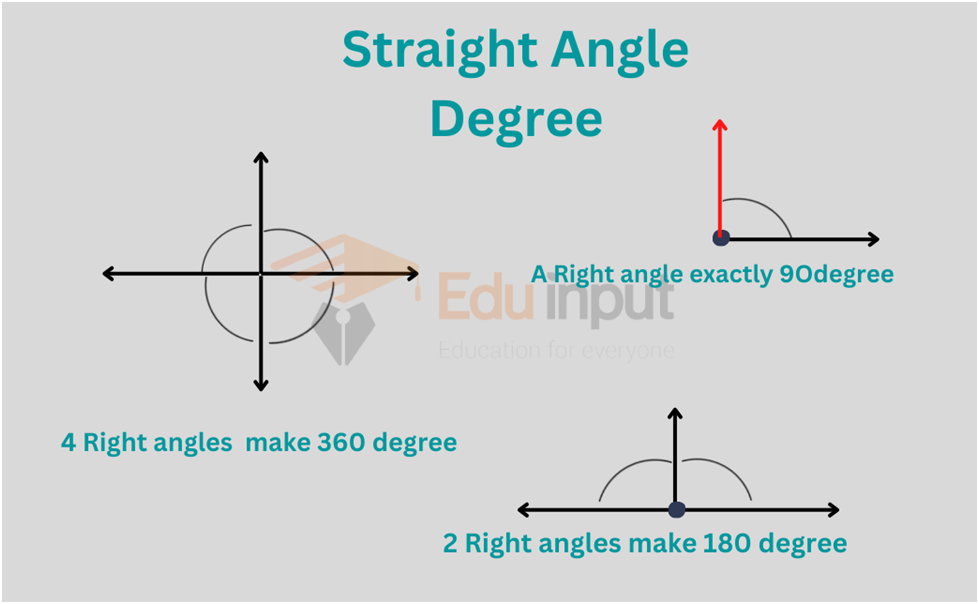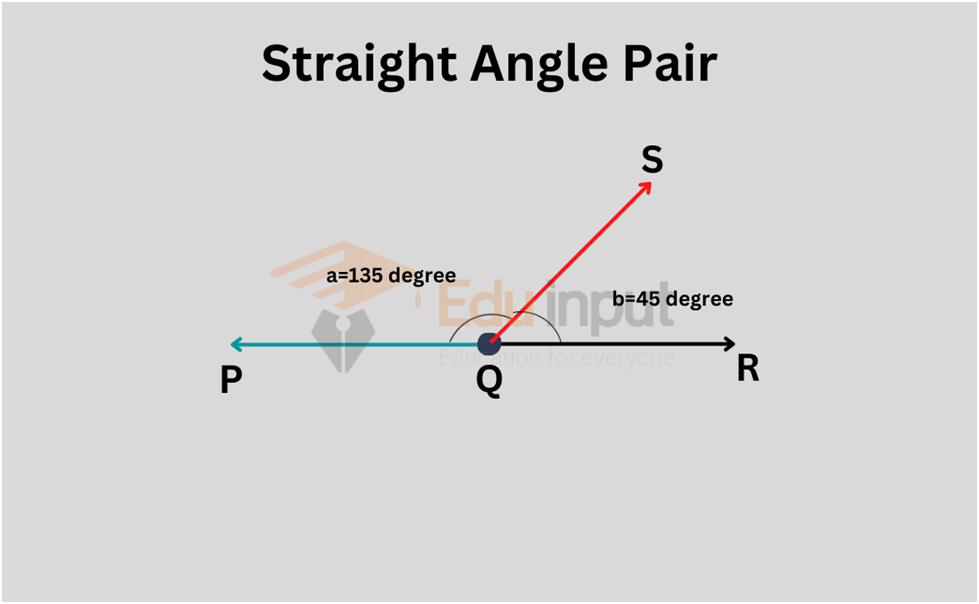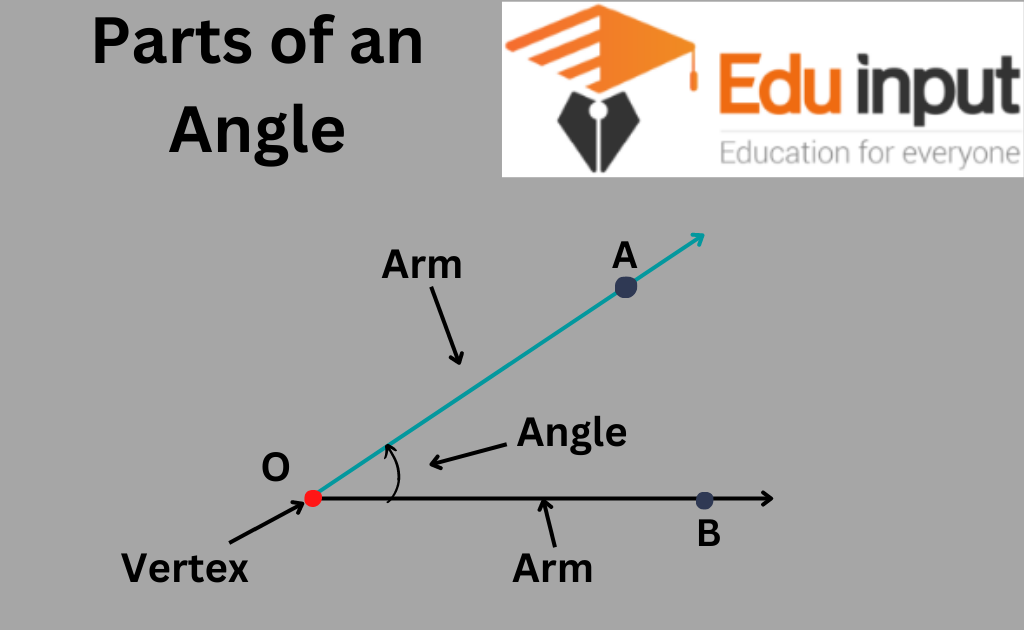Straight Angle-Properties of Straight Angles
In geometry, an angle is created when two rays or line segments share a common endpoint – this is called the vertex. Angles are measured in degrees, with a full rotation measuring 360 degrees. The word “angle” is derived from the Latin word “angulus,” meaning “corner.” Different types of angles that can be formed on a plane surface include acute angle, obtuse angle, right angle, reflex, and straight.
In this article, we’re focusing on one particular type of angle: the Straight angle. We’ll discuss its definition, properties, and examples in detail so you can get a better understanding of what it is and how it works.
What is a Straight Angle?
Two rays that join together always form an angle. The angle between two rays in opposite directions is called a straight angle. In geometry, a straight angle is an angle whose vertex point has a value of 180 degrees.

In other words, when the arms of the angle are pointing in opposite directions, they form a straight angle. The arms make a straight line through the vertex.
Notation
A straight angle is represented as 180° in degrees and pi (π) in radians.
Real-Life Example of Straight Angle
We see straight angles all the time in our everyday lives. Here are some examples of what a straight angle looks like.
- A straight stick forms a 180-degree angle.
- An angle is formed in a see-saw.
- When you look at a clock and it reads 6:00, the number 6 forms a straight angle.
- A rectangular tabletop has angles that form a straight line.
- Your line of sight is a perfect example of a straight angle.
The angles given below are all straight angles. The only difference between them is their orientation. After seeing these examples, you will be able to find many straight angles in your everyday life.
Supplementary Angles
A straight angle can be made up of two or more angles. Since a straight angle has a total of 180°, other angles whose measurements have a sum of 180° can lie within it. Angles that form a straight angle are called supplementary angles.
For example, two right angles placed back-to-back would form a straight angle. This is because each right angle has a measurement of
90°, and when two of these are placed together, they equal 180°
. These right angles would be considered supplementary since they create a straight angle. A straight angle could also consist of a right angle and two acute angles, or an obtuse angle and an acute angle.
Semi-Circle
Did you know that straight angles can actually represent half of a circle? It’s true! Circles contain a total of 360°, and half of 360 is 180. Therefore, straight angles make up a semi-circle. For example, half of a pizza has an angle measurement of 180° – which is a straight angle.
Properties of Straight Angles
The main properties of a straight angle are:
- It’s created when one ray is turned by 180° in relation to another ray.
- It changes the direction of a point.
- It’s exactly half of a revolution.
- You can also make a straight angle by joining two right angles together.
Straight Angle Degree
A straight angle always measures 180 degrees. In the conventional angle measuring system, we consider a right angle to be 90 degrees and a full circle to be 360 degrees. A straight angle is made up of two right angles.
Observe the figure below to understand this fact

Straight Angle Pair
Two angles that form a straight line are called a straight angle pair. The sum of two angles in a straight angle pair always equals 180°. They’re also known as linear pairs of angles. The image below shows two angles, a = 135° and b = 45°, which together form 180°.
The straight angle pairs have some key properties in common. They share a common arm (the line segment that connects them) and a common vertex (the point at which they meet). In the figure below, QS is the common arm and Q is the common vertex.

Summary
- A straight angle is formed when two rays are rotated in opposite directions by 180°. This type of angle is exactly half of a revolution and is denoted by π in radians. A straight angle reverses the direction of a point.
- A linear angle, or ‘straight angle’, is two angles that sit adjacent to each other on a straight line and add up to 180 degrees. So, if angle A + angle B equals 180 degrees, then angles A and B form a linear pair.
Frequently Asked Question-FAQs
What is a Straight Angle in Math?
When two rays or arms of an angle are in opposite directions, they form a straight line. The angle formed by these two rays is 180°. This is called a straight angle.
What is Half the Measure of a Straight Angle?
90° is half the measure of a straight angle. It is also called a right angle.
Is a straight line a reflex angle?
No, a straight line is not a reflex angle. A reflex angle is an angle measuring more than 180° and less than 360°.
What are the other five types of angles?
There are five main types of angles: acute, obtuse, right, reflex, and full.
Can we say that a Straight Line is a Straight Angle?
Yes, a straight line with two endpoints makes an angle of 180 degrees. So we can consider a straight line as a straight angle.
How many Right Angles are there in a Straight Angle?
A right angle is exactly 90°, which means that there are two right angles in a straight angle. Adding them together gives you 180°, the measurement of a straight an

 written by
written by 





Leave a Reply